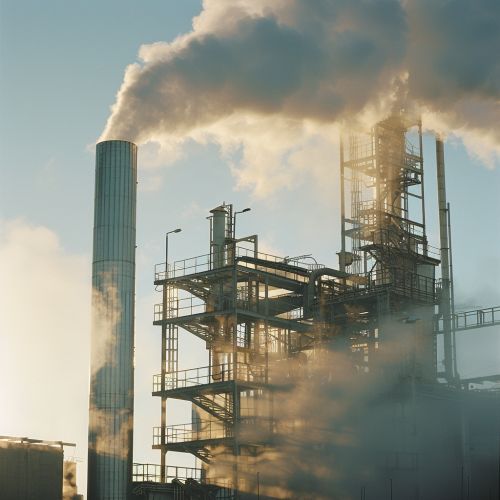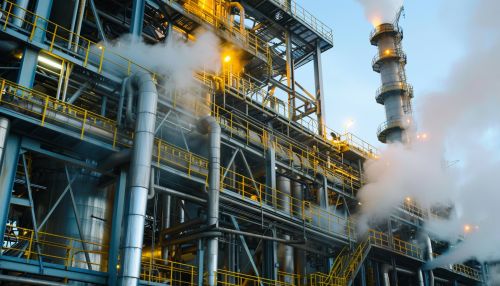Steam Cracking
Introduction
Steam cracking is an essential industrial process in the production of petrochemicals. It involves the breaking down of hydrocarbons in the presence of steam at high temperatures to produce lighter hydrocarbons, primarily olefins and aromatics. This process is the primary method for the production of ethylene, the world's most widely used petrochemical.


History
The process of steam cracking was first developed in the 1930s. It was initially used to produce butadiene for synthetic rubber during World War II. After the war, the demand for ethylene and other olefins for the production of plastics and other chemicals increased, leading to the widespread use of steam cracking.
Process
Steam cracking is carried out in a specially designed furnace. The feedstock, which can be a range of hydrocarbons from light gases such as ethane and propane, to heavier liquids like naphtha or gas oils, is mixed with steam and heated to very high temperatures, typically in the range of 750 to 850 degrees Celsius. This causes the hydrocarbon molecules to break apart in a process called pyrolysis. The resulting mixture of different hydrocarbons is then quickly cooled to stop the reaction, a process known as quenching.
Products
The primary products of steam cracking are olefins including ethylene, propylene, and butadiene, along with other byproducts such as hydrogen, methane, and aromatics. Ethylene is the most important product, as it is a key raw material in the production of polyethylene, the most common plastic. Propylene is used to make polypropylene, while butadiene is used in the production of synthetic rubber.
Environmental Impact
Steam cracking is a highly energy-intensive process, and thus has a significant environmental impact. It is a major source of greenhouse gas emissions, primarily carbon dioxide. However, efforts are being made to reduce the environmental impact of steam cracking, such as the development of more energy-efficient cracking furnaces and the use of renewable feedstocks.
Future Developments
There is ongoing research into improving the efficiency and environmental impact of steam cracking. One area of focus is the development of catalysts that can lower the temperature required for the cracking process, thus reducing energy consumption. Another area of research is the use of alternative feedstocks, such as biomass or waste plastics, to produce olefins.
